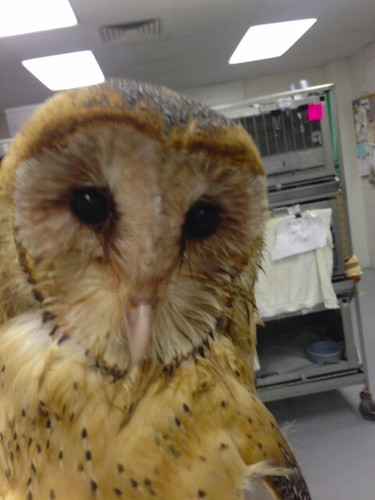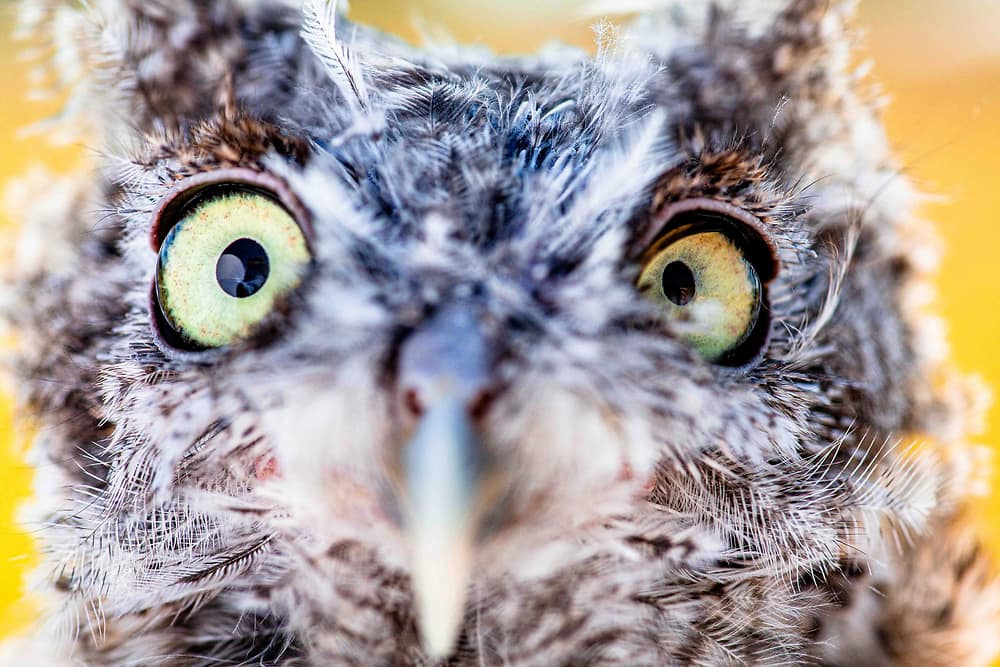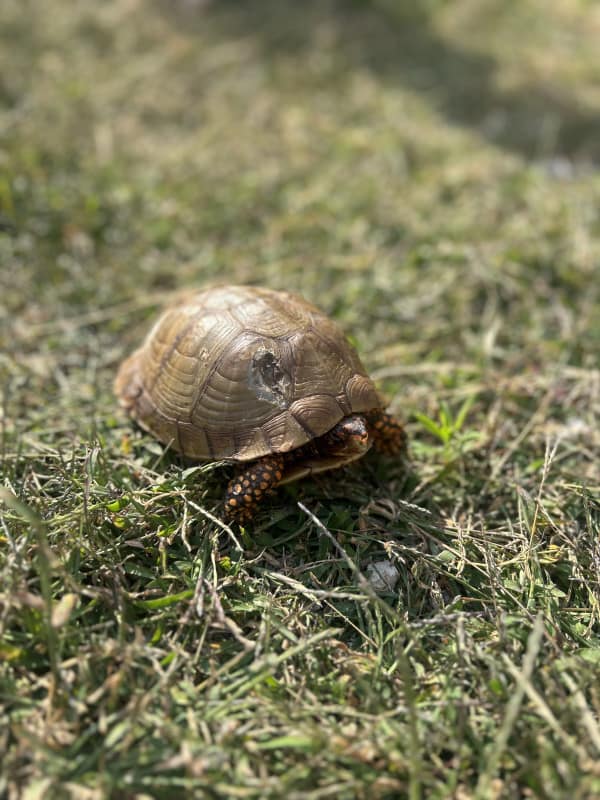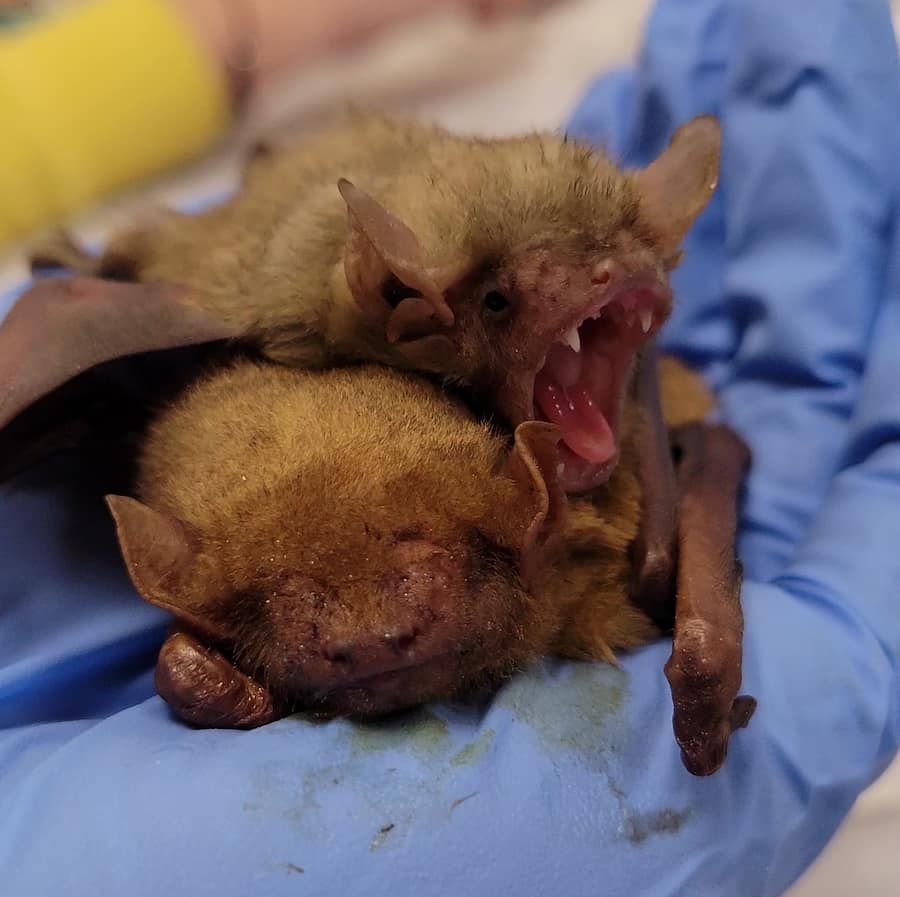by Christine Mallo (VM16)
At the University of Illinois Wildlife Medical Clinic, our mission is to rehabilitate sick or injured wildlife back to the point where they can be released into their natural habitat. The rewarding emotions you feel after doing such is extremely exciting, and is part of what makes the clinic such a draw for students. I have only been a member of the clinic for over a year now, but my membership in it is something I can carry with me for the rest of my future career as a doctor. I advanced from team member to team leader between my first and second years, and have loved nearly all experiences encountered…except a few…

In the summer of 2013, the clinic was presented with a pretty interesting case, and an animal that not all of us have seen before, a Barn owl. Owls are considered raptors, in that they catch prey using the large talons that they possess. These talons can be very dangerous to handlers as well, so special precautions are taken to keep handlers safe. This particular owl was presented with a fracture in its left leg. Radiographs were done before any surgeries to determine how severe the break was. Luckily, this break was directly in the middle of a bone; the easiest kind to fix because no joints are involved. The members in the summer arranged to have orthopedic surgery performed to stabilize the bones into their proper locations, and to encourage healing. While this procedure is taxing on the animal’s body and lots of physical therapy is needed to keep the patient’s muscles strong, this is not an uncommon procedure in the clinic. The owl was placed on pain medication and anti-inflammatories to reduce the amount of swelling and potential pain associated with the fracture and surgery. Eventually the fracture healed but during this patient’s stay, the real problems occurred!
First off, when wild animals are in captivity, they have a hard time feeling fully comfortable. Although we humans tend to eat more when we are stressed, wildlife tend not to eat. Because of this, my team had to work to cut up and hand feed food to this owl, which is not an easy task! Trying to convince an owl that the food you’re giving it is AWESOME takes a lot of skill, but eventually the patient started to eat on his own. Also, we believe that by moving our patient to one of our larger flight cages, we made it feel like it was in a more natural setting. So far, two goals were accomplished! Our patient’s leg was healing, and it was feeling comfortable enough to eat on its own!
Then…something else happened! Owls are meant to sore and roam the skies freely, with plenty of room to spread their wings. Unfortunately, this bird accidentally banged its left wing on one of the walls of the enclosure on day and the resulting wound was severe enough to require twice daily treatments. Somewhat like our own dog or cat at home (or even ourselves!), when there is a scab, we have to pick at it. This is just what the Barn Owl did! Because he had a little lesion from banging his wing once, he started to pick and pick and pick at his wing to the point that it became very infected and we had to surgically intervene. The Zoo Med doctors had helped us throughout this entire process, but this is really where their expertise came as a huge help. Dr. Whittington was able to “debride” the area on the wing that became infected…twice! Debriding means that the unhealthy tissue is removed, to promote the healthier surrounding skin to heal across the wound. The second time this was done, Dr. Whittington actually sutured the healthy skin back together. After a few more cleanings, the wing was better! Three problems were originally on our list, all of which turned into three solutions!
After being positive that our patient was healthy enough to leave the critical care that we provide, we contacted the Illinois Raptor Center to send our bird to them for more a more intense flight therapy. This patient spent a total of 75 days in the Wildlife Medical Clinic at the Veterinary Teaching Hospital, and over that time it lost muscle conditioning. If we were to send this patient into the “real world” right away, it may not survive due to being out of shape. At the Illinois Raptor Center, their teams can allot more space to each patient, really making sure that they build their muscles back to being strong and sturdy.
When all was said and done, my team was extremely proud of themselves for being the students fully responsible for the rehab of this accident-prone owl. For a lot of the team, it was their first time handling a bird of prey, and the lessons we learned along the way (myself included!) were incredible. The thing about wildlife is that while we may try our hardest to make their stays as short as possible, sometimes they introduce new problems along the way. But this is part of what our futures as veterinarians will be: problem solving and staying on our toes. It wasn’t always easy, but at the end of the day, we helped to save a life. Who could ask for more than that?



